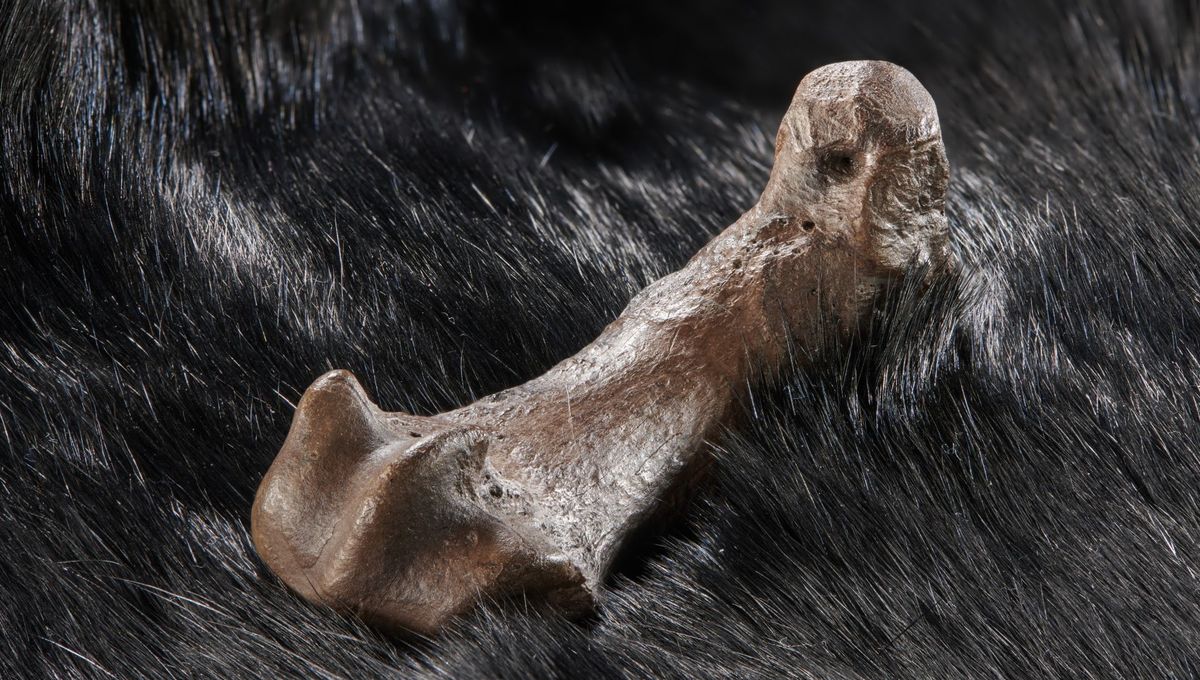
Northern Europe is no place to be running around naked during the winter, and new research indicates that ancient humans may have figured out how to make clothing from bear pelts as early as 320,000 years ago. According to the study authors, the fur-wearing hominins probably didn’t eat bear meat, but hunted the animals exclusively for their cuddly hides.
Researchers found cut marks on the paw bones of a cave bear at the Stone Age site of Schöningen in Germany. In a statement, study author Ivo Verheijen explained that “cut marks on bones are often interpreted in archaeology as an indication of the utilization of meat.”
“But there is hardly any meat to be recovered from hand and foot bones. In this case, we can attribute such fine and precise cut marks to the careful stripping of the skin,” he said. “These newly discovered cut marks are an indication that about 300,000 years ago, people in northern Europe were able to survive in winter thanks in part to warm bear skins.”
In their write-up, the authors explain that ancient humans probably weren’t walking around in bear onesies, but would have worn “simple clothing… constituted of animal skins that were wrapped around the body without elaborate tailoring.” Due to their “high insulating properties,” bear pelts would have provided the ideal material for a cozy winter wrap.
While similar evidence for bear skinning has been unearthed at Paleolithic sites across Europe, the findings at Schöningen are among the oldest ever discovered. The bones also help settle the debate over whether ancient humans actively hunted bears or simply scavenged furs from dead animals.
“Schöningen plays a crucial role in the discussion about the origin of hunting, because the world’s oldest spears were discovered here,” said Verheijen. Furthermore, he explains that “if only adult animals are found at an archaeological site, this is usually considered an indication of hunting – at Schöningen, all the bear bones and teeth belonged to adult individuals.”
Bolstering this argument, the study authors explain that bear skins are only usable if they are harvested within a day of the animal’s death. “Otherwise, the skin will be spoiled through decomposition and ‘slipping’ of the hair,” they say.
Simply stumbling upon the carcass of a bear that had died of natural causes wouldn’t do much good, as humans needed to access the pelt almost immediately after the creature had died. Active hunting therefore seems a more feasible method of fur procurement than scavenging, although the authors found no spear wounds or other direct evidence of hunting at Schöningen.
They did, however, find large numbers of tools that are commonly associated with hide removal and preparation, such as “scrapers and smoothers.” Taken together, they say, all of this evidence “supports the hypothesis of active hunting by hominins.”
The study is published in the Journal of Human Evolution.
Source Link: Humans Were Skinning Bears To Wear Their Fur 320,000 Years Ago